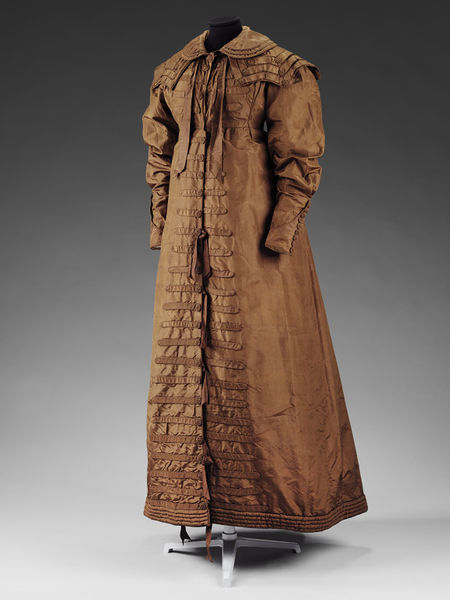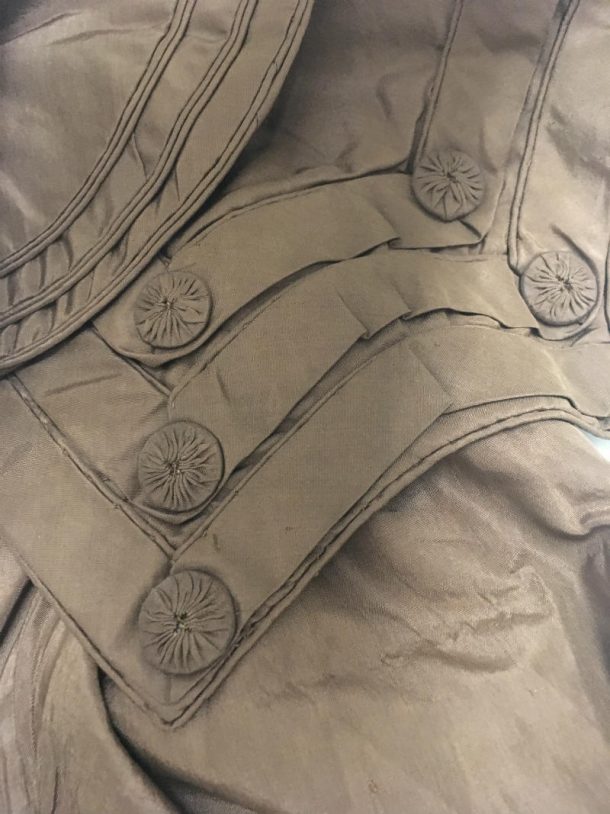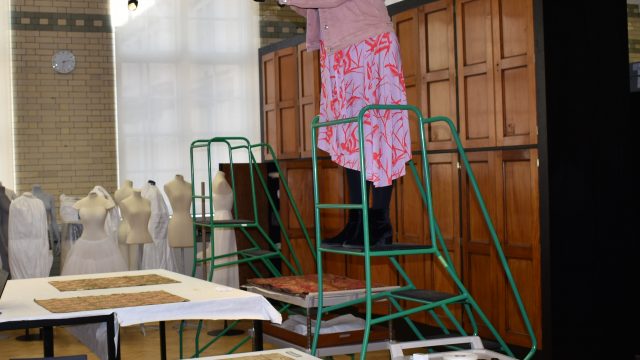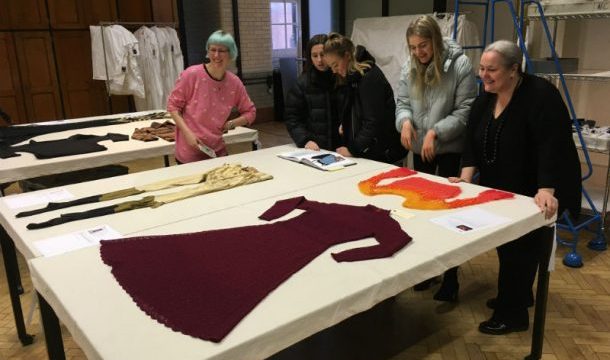We’ve got all the way to the eleventh gift given in “The Twelve Days of Christmas”: “Eleven pipers piping.” I’ve chosen to represent this present with the pelisse and cape collar pictured below, which are generously trimmed with piping. That’s a lot of Ps!

Piping, in this context, is a strip of fabric folded to form a “pipe,” and inserted into a seam or sewn along an edge as a trimming. Sometimes, especially historically and for upholstery, piping cord is enclosed in the folded fabric before its inserted in a seam. Piping had been used prior to the nineteenth century, and remains popular to this day. It features on various items stored here at the Clothworkers’ Centre, including this early seventeenth-century jacket with delicately piped seams, and this Ossie Clark for Radley trouser suit produced in 1970. Clark’s stylish suit is made from navy crêpe and trimmed with contrasting green satin piping. But piping was especially popular in the early decades of the nineteenth century, and it features heavily on numerous V&A-owned Regency garments, including this pelisse and matching cape collar, which were made around 1818. On this object piping can be seen on both layers of collar, where the centre edges of the pelisse meet, on the finger-like decorations along the front of the pelisse, and on the cuffs.

Piping rose to popularity towards the beginning of the nineteenth century because at this time mainstream fashion was significantly influenced by military uniforms, which often boasted prominent piping, both non-corded and corded. It was the Napoleonic Wars of 1803 to 1815—clashes that have often been associated with glamour as well as suffering, partly because of Napoléon Bonaparte’s belief in the importance of elaborate military uniforms—which called new attention to military dress.
The pelisse pictured above reflects the trend for military-style attire in other ways too. Originally, in the seventeenth century, a pelisse was a short jacket lined or trimmed with fur and worn over the shoulder of Hungarian Hussar (light cavalry) mercenaries. The garment was supposed to guard its wearer against sword cuts, and over time it was embraced by other light cavalry units. Pelisses like the one discussed in this blog got their name from these military jackets, and they were partially inspired by them, particularly early on. At the start of the nineteenth century these women’s coats tended to be tight, like the military version, when it was put on as a jacket, and they usually featured details found on military pelisses such as fur and frog fastenings (decorative fastenings made up of loops and buttons). As the fashionable female silhouette changed, the sleeves of these garments widened and pelisses started to flare out below their high Empire waists, as demonstrated by the pelisse pictured here. But the aforementioned finger-like decorations evoke frogging and other embellishments commonly found on military uniforms, and the cuffs trimmed with button shapes are military-esque.
Although military attire’s impact on fashionable dress was unusually pronounced during the Regency period, military style, like piping, has had a widespread influence on fashion. Take, for example, Doc Martens—army-style boots originally made from disused World War II military supplies and popular to this day.
If you’re interested in making an appointment to view textiles and fashion objects at the Clothworkers’ Centre, please email clothworkers@vam.ac.uk.

